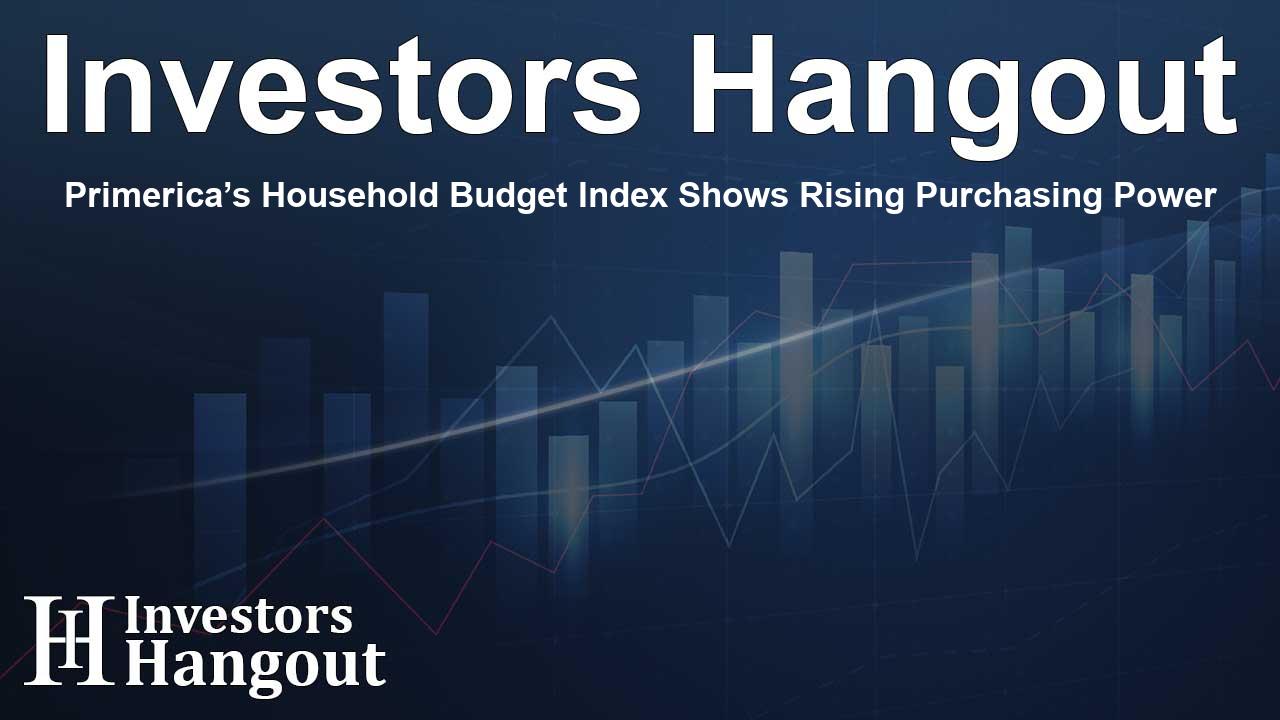Primerica’s Household Budget Index Shows Rising Purchasing Power

Primerica Household Budget Index Highlights
Primerica, Inc. (NYSE: PRI) has recently showcased a significant development in the financial landscape with the release of its Primerica Household Budget Index™ (HBI™). This index serves as a monthly barometer for the purchasing power of middle-income households, specifically those earning between $30,000 and $130,000. The index indicates that the purchasing power for such families rose to 102.7% in the latest report, a slight increase from 102.1% recorded the previous month. This recent growth marks the fifth month in a row that middle-income families have seen an improvement in their financial standing.
Understanding the Purchasing Power Increase
The notable rise in purchasing power can be predominantly attributed to a sharp decline in gas prices. As the cost of fuel decreases, it allows families to allocate more of their resources to other essential expenses and discretionary spending. Lower gas prices make a direct impact on the overall mobility and economic activity of families, encouraging greater participation in local economies.
How the Index is Constructed
The construction of the Primerica Household Budget Index™ (HBI™) involves extensive research and analysis led by the chief economic consultant, Dr. Amy Crews Cutts. The index utilizes data from reputable sources like the U.S. Bureau of Labor Statistics and the Federal Reserve Bank of Kansas City. It focuses on vital household expenditures, including food, electricity, gas, and healthcare, which are critical to understanding inflation and wage growth trends.
The Implications of the HBI™ Readings
When the HBI™ exceeds 100%, it signals stronger purchasing power compared to the baseline set in January 2019. This implies that families may find themselves with additional funds for entertainment, savings, or even debt reduction. Conversely, readings below 100% indicate that families might need to curtail spending, reduce their savings, or find new avenues to manage debt effectively. The baseline was chosen to reflect stable economic conditions before the disruptions caused by the pandemic.
The Impact of Healthcare Costs on Budget Calculations
Recently, there has been a methodological shift in how healthcare costs are factored into the HBI™, particularly concerning health insurance. As of the October 2023 release of data, the health insurance costs will no longer be part of the index calculation. This change highlights the growing disconnect between reported health insurance metrics and actual consumer experiences, emphasizing the need for accurate reflections of family budgeting.
Adjustments to Prior HBI™ Values
Periodic revisions to the HBI™ may occur due to updated data from the Consumer Price Index series. Such adjustments ensure that the index remains relevant and accurately depicts current economic realities. The exclusion of certain healthcare costs will potentially lead to lower reported values in the future, realigning expectations regarding household budgeting and planning.
About Primerica, Inc.
Headquartered in Duluth, GA, Primerica, Inc. focuses on providing essential financial products and services to middle-income families across North America. The company prides itself on educating clients about securing their financial futures, offering solutions that include term life insurance, mutual funds, and investment products. Primerica has successfully insured approximately 5.7 million individuals and serviced around 2.9 million investment accounts as of late 2023. Its substantial reach within the market is underscored by its position as the second-largest issuer of term life insurance in both the United States and Canada in 2023, and it is publicly traded on The New York Stock Exchange under the ticker symbol “PRI”.
Frequently Asked Questions
What is the Primerica Household Budget Index™ (HBI™)?
The HBI™ is a monthly index that tracks the purchasing power of middle-income households, reflecting their financial health across various expenses.
Why has the purchasing power for middle-income families increased?
The increase is largely due to a significant drop in gas prices, freeing up household budgets for other expenditures.
How is the HBI™ constructed?
The HBI™ is compiled by experts using data from sources such as the U.S. Bureau of Labor Statistics and focuses on essential household costs like food, utilities, and healthcare.
What does an HBI™ value above 100% signify?
An HBI™ value above 100% implies that middle-income families have more purchasing power compared to the baseline, allowing for greater disposable income.
What recent changes have been made to the HBI™ methodology?
Starting with the October 2023 release, health insurance costs will no longer be included in the index, aligning more closely with consumer experience regarding healthcare expenses.
About Investors Hangout
Investors Hangout is a leading online stock forum for financial discussion and learning, offering a wide range of free tools and resources. It draws in traders of all levels, who exchange market knowledge, investigate trading tactics, and keep an eye on industry developments in real time. Featuring financial articles, stock message boards, quotes, charts, company profiles, and live news updates. Through cooperative learning and a wealth of informational resources, it helps users from novices creating their first portfolios to experts honing their techniques. Join Investors Hangout today: https://investorshangout.com/
Disclaimer: The content of this article is solely for general informational purposes only; it does not represent legal, financial, or investment advice. Investors Hangout does not offer financial advice; the author is not a licensed financial advisor. Consult a qualified advisor before making any financial or investment decisions based on this article. The author's interpretation of publicly available data shapes the opinions presented here; as a result, they should not be taken as advice to purchase, sell, or hold any securities mentioned or any other investments. The author does not guarantee the accuracy, completeness, or timeliness of any material, providing it "as is." Information and market conditions may change; past performance is not indicative of future outcomes. If any of the material offered here is inaccurate, please contact us for corrections.